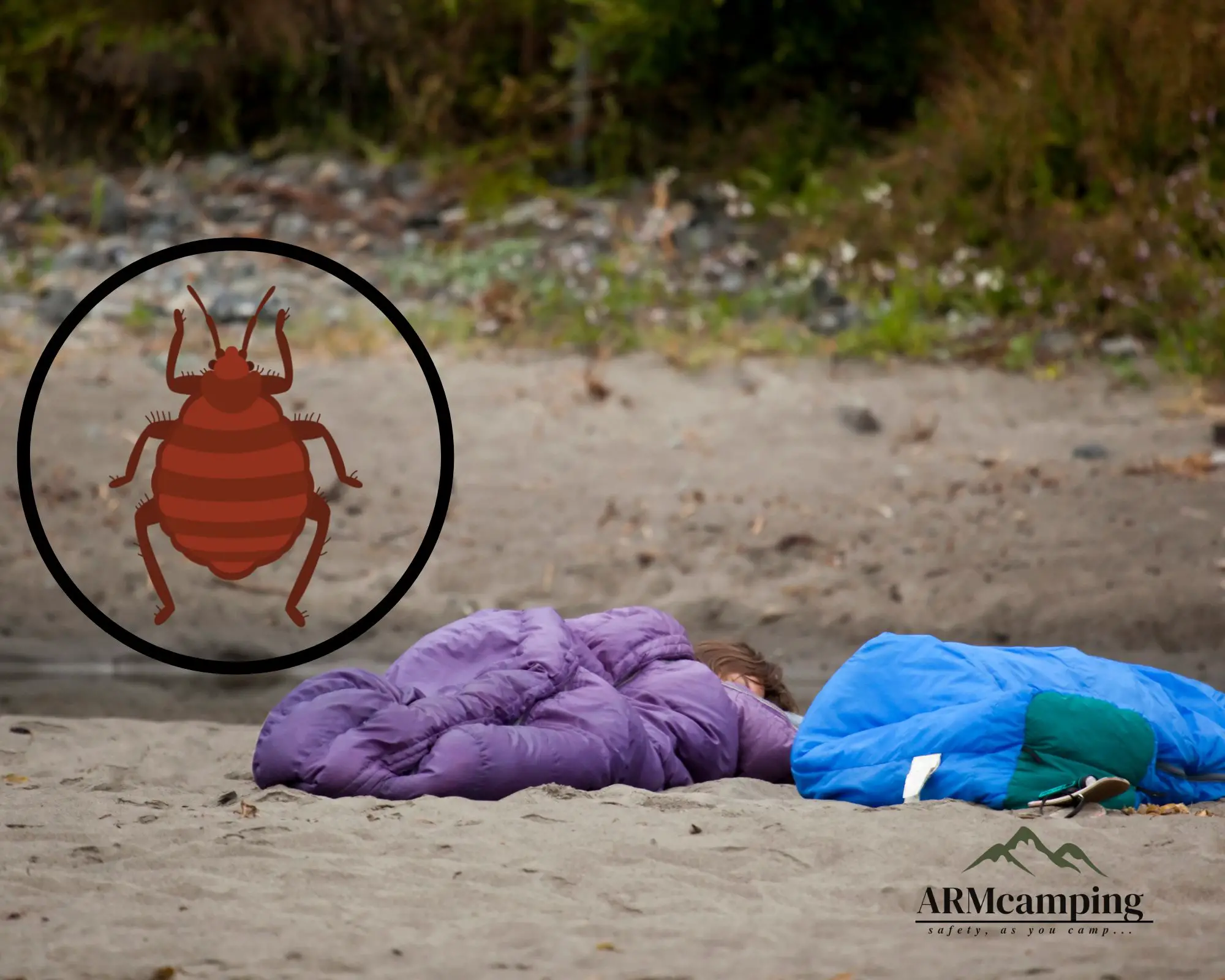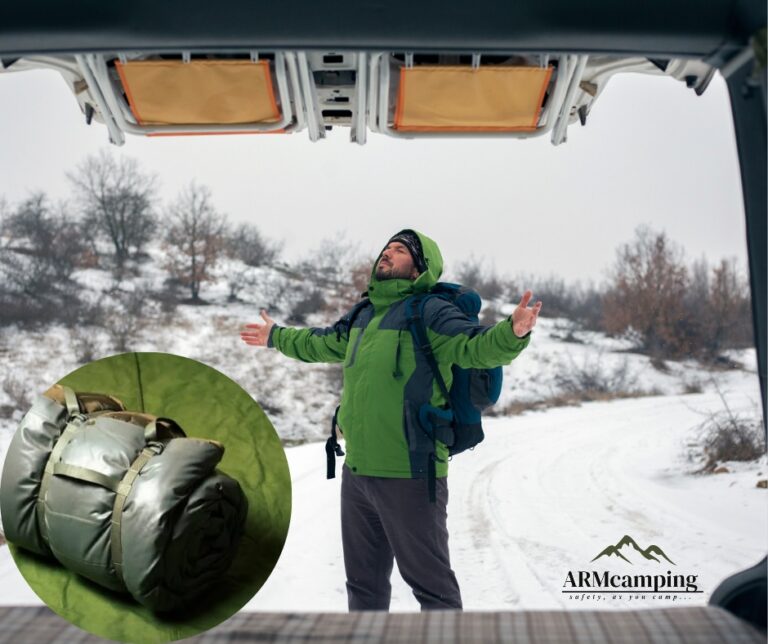
Yes, they can. Bed bugs are flat-bodied, slick, and resilient bugs. They seem to find their way around easily where they smell the presence of food—human skin. How can bed bugs find their way into your sleeping bag, though? What can you do to avoid penetration from these bugs? If they have already penetrated your bag, what can you do? Read this article to find out.
How Can Bed Bugs Penetrate Your Sleeping Bag?
Table of Contents
As you may know already, bed bugs don’t live out in the park, grand canyon, or any other places where you spend time hiking. They are back home in your mattresses in the bedrooms and the furniture in the living rooms. They’ve been known to inhabit the kitchen walls, and cracks in the doors and windows. Yes, they do get around much, just not outdoors. Here are how bed bugs can find their way into your sleeping bag:
1. You Brought Them with You
One of the most likely ways bed bugs can have a chance to penetrate your sleeping bag is when they transit through your clothes. It means you already have an infestation at home. They got on your clothes, from your clothes into your bag where the bugs promptly begin to start a colony.
2. Someone on Your Team
That’s another conduit bed bugs can penetrate your bag. If someone on your team while outdoors has an infestation at home and they carry a bug on their person, and they used your sleeping bag, they can transfer the bugs to your bag.
3. You Placed the Bag in An Infested Area
Bed bugs will definitely transfer onto your bag if you place the bag in an infested area. This may happen while storing your bag.
4. You Stored the Bag Among Dirty Clothes
Finally, bed bugs can tell dirty clothes with your scent on them from clean clothes that are sterile because they’ve been washed with soap. Your bag will bear some of your scents, like dirty clothes. Bed bugs can transfer into your sleeping bag thinking you are in it.
What Can You Do To Avoid Bed Bug Penetration?
Sleeping bags are actually designed in such a way that makes it is difficult for bed bugs to get into them. Most bags don’t have many folds in them, and the silk material is usually slick too. Yet, as noted above, bed bugs are patient enough to wait until the bag is open. Here are tips to help you prevent penetration by bed bugs:
Treat Infestation At Home
Your home is actually the base for bed bugs. If you have noticed an infestation in your bedding, mattresses, and furniture, call professional exterminators if you feel the problem is beyond you. Depending on how bad the penetration in your bag is, be prepared to lose the bag.
Always Seal The Bag
Sleeping bags come with their own cases in which you can store them. Make sure to let the zippers run to the end of the line, leaving no space for bugs to penetrate. If your bag is the type that can be hung, check the hanger, and the wall around it for cracks, and for bed bugs hiding in them.
Wash Your Bag Periodically
This is as much for precautions as it is for preventing bed bugs from making a home in your bag. Normally, sleeping bags don’t require washing constantly. But if you suspect that during the last use, there may have been contacted with bugs, you should dip the bag in a laundromat and give it a good wash and spin. Let it dry in the sun after that. Bed bugs have very little affinity for clean environments.
Encase Your Bag
The encasement is one method that works effectively in the general treatment of bed bug infestation in homes. It works with bedding and mattresses and clothes. The idea is to keep bed bugs out and isolate the bag.
You can find special bags with zippers on them for this treatment. Spending an extra buck on this encasement could be cheaper than replacing your sleeping bag. Put your bag in one of these encasement bags and leave it there until the next trip at the end of the year.
Prevention
This is about the best way to prevent bed bugs from penetrating your bag. Keep your bag away from dirty clothes and areas in the home where bed bugs can be found. If you spot one on your clothes, keep the clothes away from everything else in the home and investigate the rest of the house.
What To Do If Bed Bugs Have Already Penetrated Your Bag
One way or another, bed bugs finally penetrated your bag, what do you do? Apart from following some of the suggestions stated above, you can also do the following:
Assess The Situation
Don’t panic. First, assess the situation to see how bad it is. You have to decide early on whether you are prepared to lose your sleeping bag or not. Check all folds along the seams of the bag. Turn the bag inside out. Check for bed bug eggs which are usually tiny but visible. They are whitish in color and usually cluster along seams and folds. Also check to see if you can find blood or fecal stains, or both. If you find plenty of stains, it means you’ve been harboring bed bugs in your bag for a long time. It will stink in the bag, a pungent smell.
Wash On Hot
Check the tag on the bag if you are allowed to wash it hot. Especially if the bag has a down insulator.
It is recommended that you use the laundromat for this treatment. Turn the machine hot, at least 120 degrees Fahrenheit. Use a bed bug laundry additive for this wash. The additive and the heat are sure to get rid of the bedbugs and their eggs. Also, be sure to follow what the maker of the bag says about the use of a dryer on the tag.
Other Drying Options
If the tag on your bag says you can’t use a dryer for the sleeping bag, then you can try other options like sun drying.
The ultraviolet rays of the sun can do wonders for your quest to clean your bag of bed bugs. And also natural air helps remove the smell of the additive.
The Takeaway
Don’t underestimate bed bugs. Although your sleeping bag is designed to keep water out because it’s waterproof, it doesn’t mean it can perpetually keep bed bugs out. On the other hand, you do not have to trash your bag if penetration happens. Following the tips in this article can help you get rid of them.







